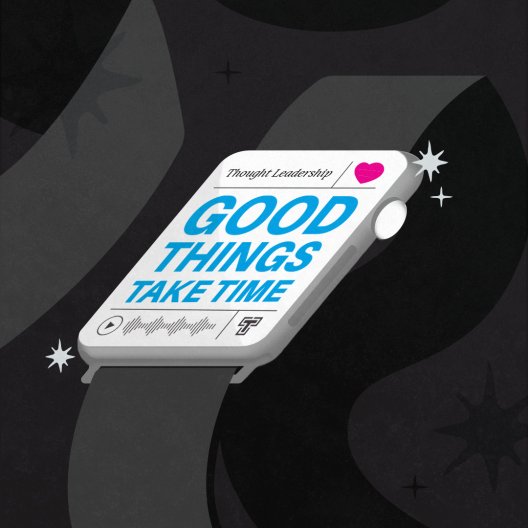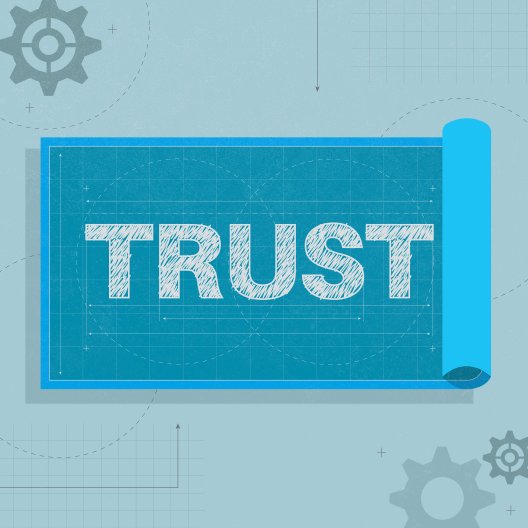
Throughout my career, I’ve seen many companies attempt to create in-house groups designed on an agency model. Although there are some situations where this can make sense, I’ve also found that many organizations don’t always think the whole process through.
I have a balanced perspective on the “build or buy” question because I’ve been on both sides of the bargaining table. Over the years, I’ve worked on this type of expanded in-house team for several large industrial companies and also promoted similar clients from the agency side. In this article, we’ll examine the pros and cons of three different approaches: building an agency-style, in-house group, working with a full-service marketing agency, and a “hybrid” model that combines elements of both.
We Few, We Happy Few
From a cost perspective, doing everything in-house has a certain appeal — at least on the surface. You have marketing resources at your disposal and can use them whenever you like, with no hourly fee. You can build a team that has most or all of the capabilities you would pay an agency to provide. This might be worthwhile if you know you’ll have enough work to keep your team busy 30 to 40 hours a week.
An internal team also gives you some protection when times get tough, especially if your leadership views marketing as an expense (God forbid!), rather than an investment. If your budget gets slashed or frozen during a downturn, you can still function as a marketing organization as long as finance isn’t touching your headcount.
One of the easiest ways to justify in-house capabilities is the “speed factor”. You can get your team started on a project immediately without having to contact an outside agency, get an estimate, and so on. Of course, if you have an agency on retainer, they can get going just as quickly.
Speed isn’t just an advantage for your marketing team. If you’re servicing internal stakeholders, whether it’s engineering, HR, the C-suite, or some other department, you can farm your team out as needed. When I worked on the corporate side, for example, there were a lot of internal presentations and other meeting prep work to do. We spent a great deal of time “talking to ourselves”. This often meant we had to build presentation decks, which we could do quickly because we had in-house resources who excelled in PowerPoint design.
In addition to the speed factor, you have full control. You can manage your narrative in any way you want without incurring pushback. And while any reputable agency will be willing to work under a non-disclosure agreement (NDA), organizations that manage defense contracts or financial information sometimes sleep more soundly at night if they feel like they have internal control of proprietary information.
Slings and Arrows
If you’re starting to get excited at the thought of doing business without an external marketing budget, take a step back and think again. Not to burst your balloon about saving an “outrageous fortune”, but it may not be as cheap and efficient as it sounds.
Your first challenge is going to be finding the people you need for your internal dream team. Your second challenge will be keeping them.
Creative people thrive on variety. Unless your organization is a resume-builder like Apple, Google or Amazon, many will hesitate to take a gig that involves focusing on just one brand day in and day out. Even though you may be offering a better salary than they might make at an agency, especially at higher seniority levels, you may still struggle to attract talent.
Even if you do, you’d better have something more exciting for them to work on than an endless stream of PowerPoint decks. It’s a reality of the creative business that the wacky people who can knock it out of the park every time tend to gravitate to the agency world. Your in-house videographer who specializes in training videos may not have the breadth of experiences, equipment or other resources to create that Super Bowl-worthy commercial your CEO has his heart set on. Good project managers are a bit easier to find — and more likely to fit into a corporate culture — but you’ll need someone who knows how to work with creative types (which is an art form in itself).
As more companies buy into marketing automation using tools like HubSpot, Marketo and similar services, a new challenge to effective marketing is starting to appear. These complicated systems need people with strong digital skills. But in many cases, we’re seeing in-house groups attracting workers with a technical mindset, rather than those with a marketing focus. Some believe these two are the same, but they’re not. It’s one thing for a prospect to “like” your social media post; engagement that drives business is another matter.
Depending on your location, it might also be a challenge to find qualified local people. Attracting every bit of talent you need from your own city or town may not be a problem if you’re in Houston, Philadelphia or San Diego. But not everyone wants to move to Durango, Colorado, Burlington, North Carolina, or Anchorage, Alaska (I can recommend Dayton, Ohio — though I may be a little biased). If you don’t offer remote work opportunities, you may find yourself stymied by geographic limitations.
If you’re an engineering/manufacturing or profit-driven organization, you may face cultural challenges when it comes to managing creative types. There’s a craziness that comes with the creative side of marketing that isn’t always a good fit in a corporate environment. In-house groups often become “islands” who find it hard to connect with the rest of the organization and vice versa. The risk is even greater if they regularly have to work with subject matter experts (SMEs) who have no sense of humor or managers accustomed to running engineering teams.
Another common pitfall is that you may not always have enough work for your in-house team to do. Then you’ve either got folks sitting around or getting spread too thin because they’re filling gaps in other areas. In my experience, both of these scenarios can cause the work quality to suffer.
Worst of all, however, is the moment when you realize you need outside-the-box marketing work that exceeds the capability of your in-house resources. If your scope is too limited and you have little or no external budget, you have two choices (both of them bad). You can let an inexperienced person try to imitate agency-level work, or you can pay the professionals to do what professionals do, in which case you’re paying twice.
In-house Summary
Pros:
- Cost advantages in some circumstances
- Faster turnaround
- Easier to keep proprietary information secure
- Some protection from budgetary cuts
- You control the message — with no outsiders pushing back
Cons:
- More difficult to attract talent
- Cultural challenges in some organizations
- Local talent may not be available in your region
- You can end up “paying twice” if your internal team can’t handle certain types of campaigns
- You control the message — with no outsiders pushing back
My Kingdom for a Web Developer!
Keeping costs down is one of the most common arguments for in-house groups. So it may surprise you to discover that cost containment is often one of the benefits of working with an agency.
Agency work is typically provided at a set fee. Do you want an ad, a campaign, a product launch, or some other type of project? You assign a finite budget, and once it’s done, you’re done. You don’t need to find something else for an in-house group to do until the next project comes up.
In addition, you’re not stuck with the capabilities of a group you’ve hired. You don’t even have to stick with a single agency. You have the flexibility to get whatever you need, from whomever you need, as you need it.
But the business case is only the beginning. You also get what you pay for. An agency will give you access to top creative talent, plus other resources capable of tackling challenges that regularly throw a monkey wrench into the works of in-house teams.
Even if your own group could work things out eventually, your agency can probably do it smarter and faster. Don’t have a social media expert on your staff? Your agency does, and may be able to solve your problem long before you can hire and train a rising star who’s in tune with current trends. Want to know what messages or channels work for your business? They’ll have experts in the latest marketing technology and sophisticated analysis tools. Are you saying the same things as your competitors? An agency team can learn your market quickly (if they don’t know it already) and come up with fresh new approaches.
Working with an agency means having more time to do what you know how to do best, whether it’s building widgets, writing software, providing expert consulting, or whatever. Meanwhile, your agency does what they do best: attracting business by making you look great. That’s efficiency, right?
One of the most important assets your agency provides is an “outside-in” approach. You get an independent mindset that looks at your offering without the blinders that can limit internal teams. They’ll see your business more like your customers do, which makes them more likely to uncover what motivates the buyers you want most. They rarely limit their efforts to just one new direction. Early in a project, you’re likely to see multiple executions — sometimes developed by competing teams — to ensure you get the best your agency has to offer.
Although your agency’s schedule may dictate the pace of your project, chances are they’ll be able to generate results quickly. You also don’t have to compete with your internal stakeholders for their resources. This year’s biggest product launch campaign won’t get put on hold if the VP of HR needs to present to the board and wants a PowerPoint deck yesterday.
Agency Summary
Pros:
- Cost advantages in some circumstances
- Tends to attract top talent
- Fresh, “outside-in” thinking
- Potentially unlimited creative and marketing technology resources
- Available on an as-needed basis
Cons:
- Agency capacity may require more turnaround time if you don’t have a retainer agreement
- Agency must establish and maintain trust to work with sensitive information under NDAs
- Internal budgetary cuts can limit access to agency resources
- Agency insights may challenge “the way you’ve always done it”
Let Me Not to the Marriage of True Minds Admit Impediments
A hybrid version of these two approaches brings out the best of both worlds. It’s my favorite model because it’s the one that invariably works most effectively.
Every organization’s hybrid will look a bit different, and there’s no single “right” way to divide marketing tasks between the two worlds. The agency might set the tone and strategy, providing outlines and templates that the client then executes. The client might have internal people handle smaller jobs that get done regularly, while the agency takes on larger campaigns. Having an agency on call is also invaluable if you only have an intermittent need for certain marketing resources, e.g., major product launches or support for that big annual trade show.
Hybrid arrangements can enhance the results you achieve with services like customer relationship management (CRM), marketing automation tools and yes, even generative artificial intelligence (AI). For example, you’ll get better results with professionally designed templates than you will with the same stock layouts your competitors are using, or worse, templates that use every typeface installed on your lead engineer’s computer.
Ideally, you’ll have two key people who make this relationship work. On the client side, you have a project or marketing manager who knows the nuances of their company, such as what it takes to get stuff approved, what standards and requirements the agency needs to adhere to, and the right approach to get the agency the information they need. In a perfect world, they can also help justify the company’s marketing priorities — which may involve bugging SMEs for interviews or dismissing frivolous requests from internal stakeholders.
Their counterpart should be an account director who brings a similar knowledge of how the agency’s creative and production teams operate. A good one won’t just be an order-taker, but a partner who’s willing to get to know your business and provide holistic advice about your best interests.
Hybrid Summary
Pros:
- Superior cost advantages
- Each team focuses on what they do best
- Balanced strategy informed by client and agency expertise
- Scalable marketing capabilities
Cons:
- None — everybody wins
[Exit, pursued by an accountant]




